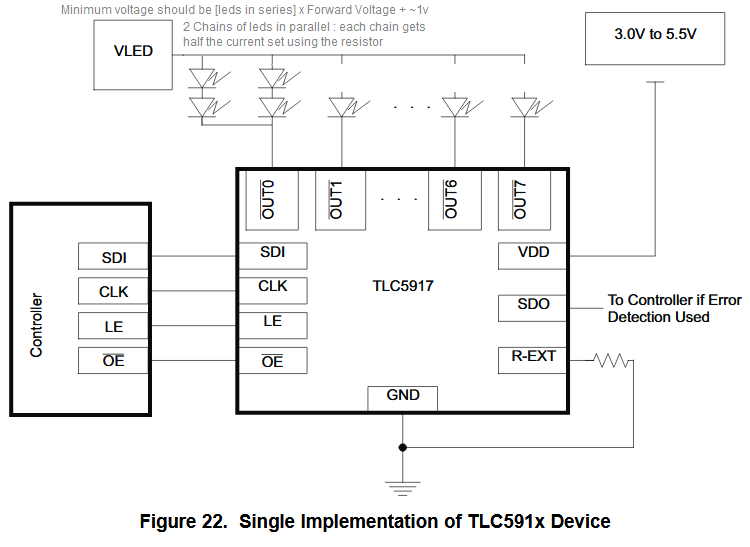Use LED DRIVER ICs ... these allow you to use a single resistor to limit maximum current on all channels, you can have multiple LEDs per channel... you can turn channels on and off using a microcontroller.
Some LED drivers allow you to control brightness per channel (percentage of maximum current set by your resistor)
Here's a very basic LED driver IC, which behaves like a regular shift register:
https://www.digikey.com/product-detail/en/texas-instruments/TLC5916IN/296-24383-5-ND/1906409The LED driver chip runs with 3v..5.5v and can work with up to 20v for the LEDs.
Here's a small modification I made to an example in the datasheet:

Let's say you have 4 blue leds that you want to drive with 50mA per LED... if you put them all in series, the total forward voltage would be 4x3.2v = 12.6v , which could be ABOVE the battery's voltage (which could be as low as 9v and as high as around 13.8v)
So, you can make two "chains" each with two leds in series, and then parallel them. The LED driver will "see" them as a LED with forward voltage of 2 x 3.2v = 6.4v and a current of 100mA ... the current will be more or less divided equally between the two chains and each chain gets 50mA
The VLED is the 12v from the battery... and it can be as little as 8v, as high as 20v ... the led driver will automatically control the current and only allow 100mA (or whatever current value you configure) to go through that channel.
You set the current limit on all channels to 100mA (or desired value) using that single Rext resistor (bottom corner of the image).
So besides this led driver chip, you only need a 3v ... 5v from a linear regulator, which can also power a tiny 6+ pin microcontroller (an ATTiny, a PIC, whatever you want)... you only need 3 wires to interact with the led driver : SDI (data in), CLK (clock) and LE (latch enable). The OE (output enable) can be permanently connected to ground if you don't need the functionality ("special mode", adjusting brightness of channels, see page 16, section 9.4 ).
So for example a 6pin microcontroller with built in oscillator would have input voltage pin, ground and 4 input or output pins... good enough.